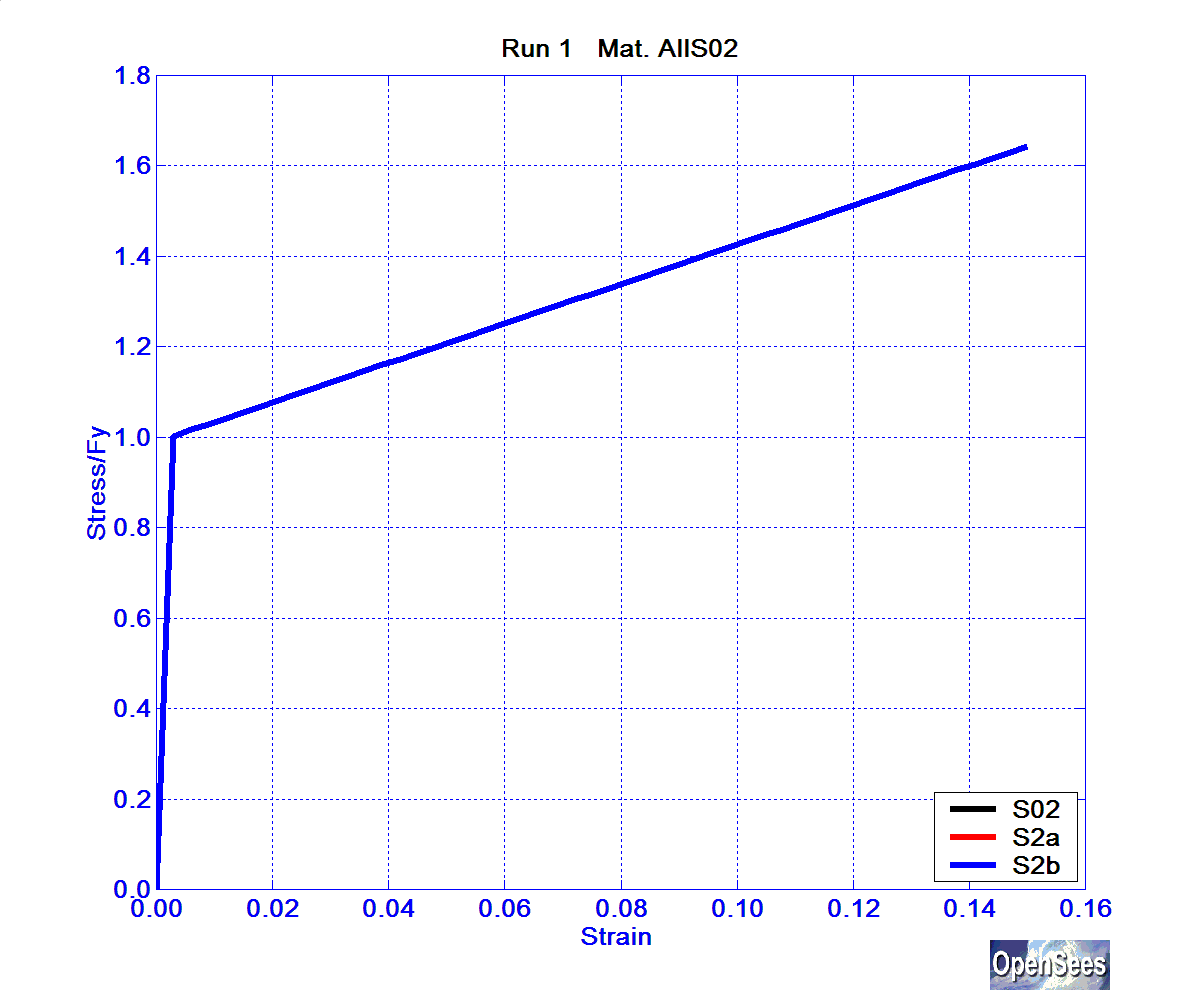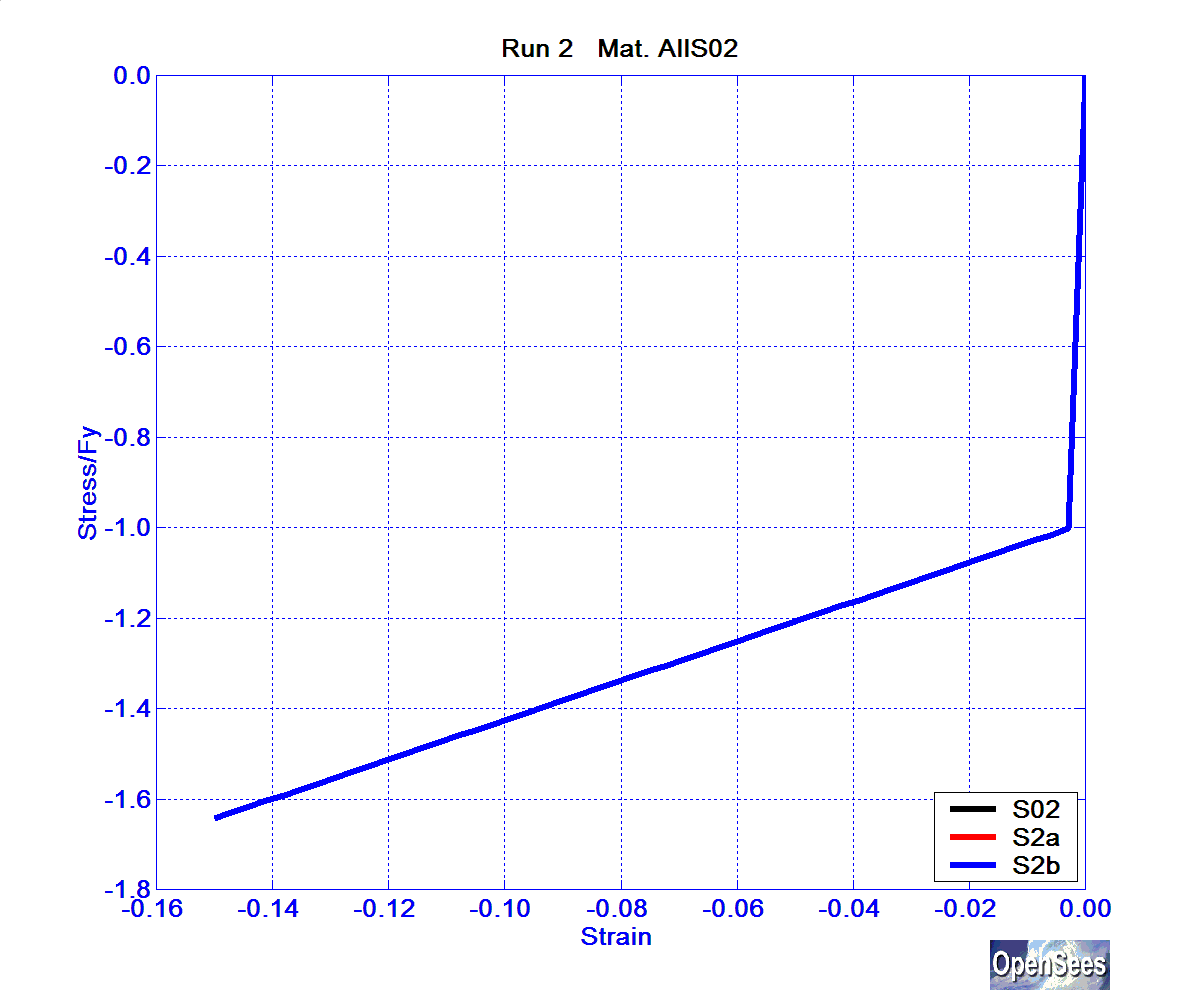The command line for Steel02 is as follows and is properly described in the previous sections and in the user command manual.
uniaxialMaterial Steel02 $matTag $Fy $E $b $R0 $cR1 $cR2 $a1 $a2 $a3 $a4
The different control arguments were investigated as follows:
S20 |
baseline |
|
S2a |
set a2x 1000; set a1x [expr $a2x*($Fy/$Es)];
set a4 0.1; set a3 [expr $a4*($Fy/$Es)]; |
# isotropic hardening parameter, associated with a1 # isotropic hardening parameter, increase of compression yield envelope.... # default value # default value |
|
uniaxialMaterial Steel02 $IDSteel2d $Fy $Es $Bs $R0 $cR1 $cR2 $a1x $a2x $a3 $a4 |
|
S2b |
set a2 0.1; set a1 [expr $a2*($Fy/$Es)]; set a4x 1000; set a3x [expr $a4x*($Fy/$Es)]; |
# default value # default value # isotropic hardening parameter, associated with a3 # isotropic hardening parameter, increase of tension yield envelope... |
|
uniaxialMaterial Steel02 $IDSteel2e $Fy $Es $Bs $R0 $cR1 $cR2 $a1 $a2 $a3x $a4x |
|
The backbone curve of each of these materials is shown in the following figures, tension in Figure 1, compression in Figure 2.
Figure 1. Backbone Curve for Steel02 Stress-Strain Relationship -- Tension

Figure 2. Backbone Curve for Steel02 Stress-Strain Relationship -- Compression

S02 |
Steel02: baseline |
S2a |
Steel02: set a2 1000; set a1 [expr $a2*($Fy/$Es)] |
S2b |
Steel02: set a4 1000; set a3 [expr $a4*($Fy/$Es)] |